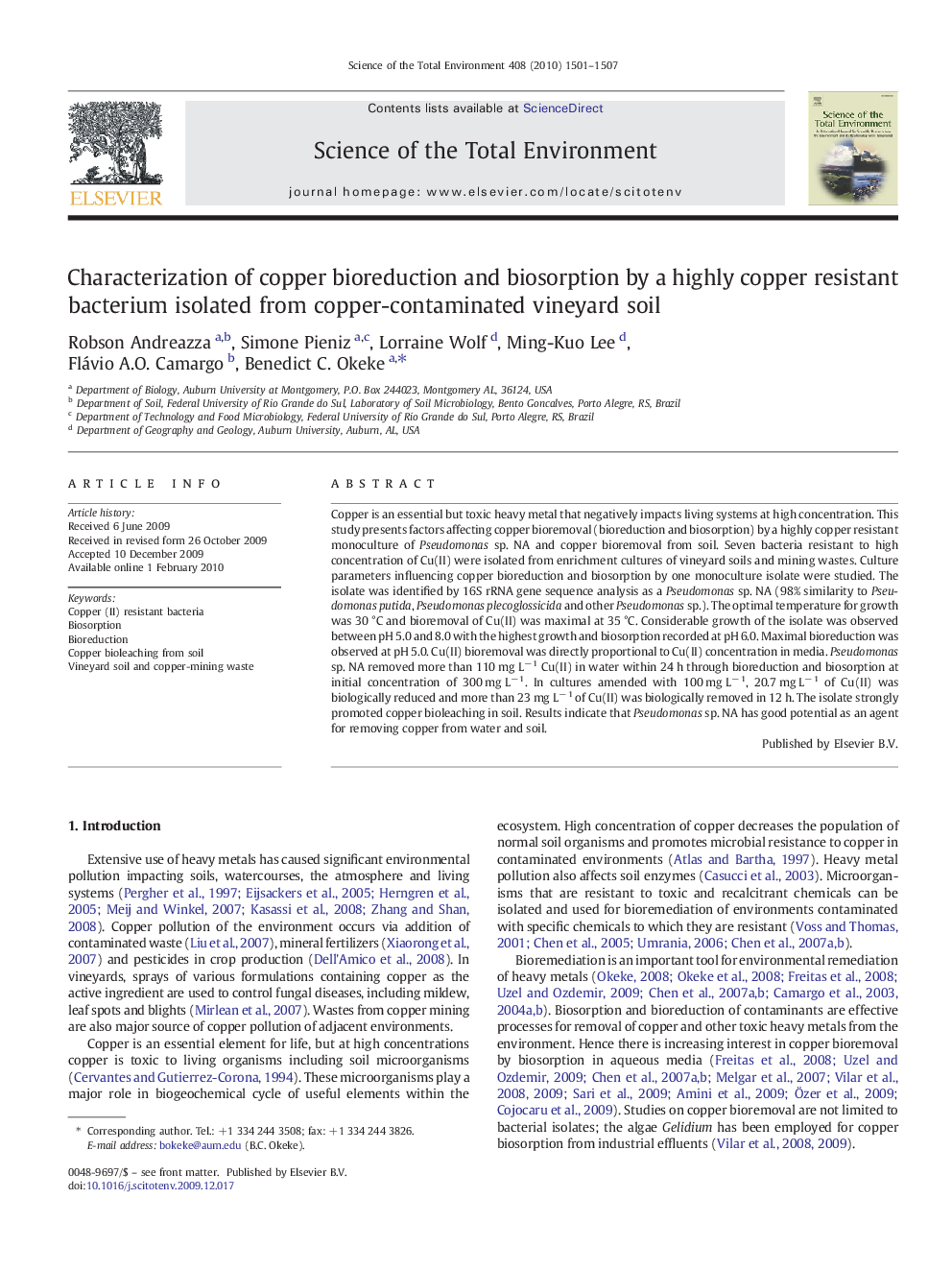| Article ID | Journal | Published Year | Pages | File Type |
|---|---|---|---|---|
| 4432051 | Science of The Total Environment | 2010 | 7 Pages |
Copper is an essential but toxic heavy metal that negatively impacts living systems at high concentration. This study presents factors affecting copper bioremoval (bioreduction and biosorption) by a highly copper resistant monoculture of Pseudomonas sp. NA and copper bioremoval from soil. Seven bacteria resistant to high concentration of Cu(II) were isolated from enrichment cultures of vineyard soils and mining wastes. Culture parameters influencing copper bioreduction and biosorption by one monoculture isolate were studied. The isolate was identified by 16S rRNA gene sequence analysis as a Pseudomonas sp. NA (98% similarity to Pseudomonas putida, Pseudomonas plecoglossicida and other Pseudomonas sp.). The optimal temperature for growth was 30 °C and bioremoval of Cu(II) was maximal at 35 °C. Considerable growth of the isolate was observed between pH 5.0 and 8.0 with the highest growth and biosorption recorded at pH 6.0. Maximal bioreduction was observed at pH 5.0. Cu(II) bioremoval was directly proportional to Cu(II) concentration in media. Pseudomonas sp. NA removed more than 110 mg L− 1 Cu(II) in water within 24 h through bioreduction and biosorption at initial concentration of 300 mg L− 1. In cultures amended with 100 mg L− 1, 20.7 mg L− 1 of Cu(II) was biologically reduced and more than 23 mg L− 1 of Cu(II) was biologically removed in 12 h. The isolate strongly promoted copper bioleaching in soil. Results indicate that Pseudomonas sp. NA has good potential as an agent for removing copper from water and soil.
